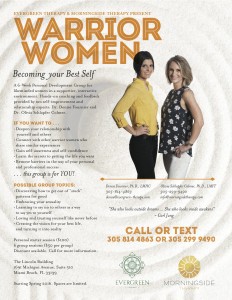“You gain strength, courage, and confidence by every experience in which you really stop to look fear in the face. You must do the thing which you think you cannot do.”
– Eleanor Roosevelt
This week’s post begins with a confession. When I first sat down to write this, I wound up spending a good amount of time staring at the blank word processor page in front of me, struggling to come up with a way to start this post. Something told me I needed to write about fear, but I wasn’t sure why, and I wasn’t sure how. Not feeling particularly inspired, I temporarily gave up. I toggled over to my web browser and decided to scroll through Facebook for a bit. In less than 30 seconds’ time, I was inundated with news headlines announcing another suicide bombing, this time in Lahore; videos featuring political mudslinging, with countless incendiary comments underneath; invitations to join groups taking action against threats to our natural environment; and more than a couple status updates reflecting negative views of the world and pessimistic thoughts about the future. After stepping away from the computer for a while to center myself and gather my thoughts, I came back to say this:
We have every reason to be afraid.
I don’t mean to be discouraging or dramatic; I’m merely pointing out the undeniable reality of what it means to live in the world today. Everywhere we turn we’re flooded with news that calls into question our safety and security. Naturally, this evokes fear—the kind of fear that has the potential to overwhelm us and steal our peace.
On some level, all of us are affected by the current climate of fear, and without realizing it, we’re likely participating in perpetuating it. That’s because fear spreads and expands in the form of a giant feedback loop: Individuals experience fear and act with the intention to defend themselves against whatever caused that fear; these actions produce fear in other people, which leads them to react defensively; those actions spur more fear and more defensive reactions; and on, and on, and on we go.
The cycle of fear that we’re currently living in is facilitated by the technology that gives us instant access to information, and the media that delivers the information to us in particular ways. While it’s good to know what’s happening in the world, staying informed has a downside: It’s hard to avoid becoming fearful, anxious, or even paranoid when we’re constantly besieged by reasons to feel afraid. But we have a choice. We don’t have to keep participating in the cycle of fear.
How do we break the cycle of fear?
To understand how to break the cycle, we must first understand the nature of fear. The truth is, fear is an evolutionarily adaptive mechanism that keeps us alive. It’s an emotion designed to allow living beings to react to anything that threatens their survival. In the most simplistic sense, it works like this: When something in your environment provokes fear, your brain and body rev up to prepare you to respond by fighting, fleeing, or freezing.
While the fear response system is designed to help us survive, it’s not without its drawbacks—the biggest being that we experience fear and act to defend ourselves even when our survival isn’t being threatened. Just anticipating that something might threaten us is enough to make us fearful and reactive. It’s important to know this if we want to learn how to do fear differently.
When it comes to fear, what we need to determine is not how we can avoid feeling it, but rather how we can learn to develop a healthy relationship with it. As challenging as this may be, it creates the potential for a much more peaceful, much less reactionary existence.
So what does a healthy relationship with fear look like?
In my view, it’s a relationship that’s characterized by three fundamental qualities: Curiosity, Compassion, and Courage.
Curiosity – When we are overwhelmed by fear and anxiety, our minds seek certainty in an attempt to stabilize and feel safe again. Since what we tend to fear are things that are unfamiliar or unknown to us, our initial instinct may be to recoil or shut down. But it doesn’t have to be this way. We are capable of responding differently to the things—or people—that stoke our fear. Instead of allowing the emotion to repel us from that which makes us afraid, we have the choice to get curious about it instead. You see, curiosity is an incredible antidote to fear. When we are curious, we enter a childlike state of wonderment. We open ourselves up to discovering something new, allowing ourselves to be inquisitive and exploratory. When we learn to respond to our fearful instincts by soothing ourselves with curiosity, we loosen fear’s grip on us.
Compassion – As I mentioned earlier, humans have built-in mechanisms that prepare our bodies to fight (or freeze, or flee) when something threatens our survival. Thankfully, we don’t have too many immediate threats to our survival these days; but even feeling threatened is enough to make us act defensively. As our fight-or-flight mechanism starts pumping adrenaline through our system, we might find that other emotions—like annoyance, anger, disgust, aggressiveness, or contempt—start to make an appearance. In no time, our fear can become rage. The implications of this can be devastating—many of our current news headlines are proof of this. But once again, we have options. We don’t have to relate to fear this way. We can learn to respond to the things we fear with a sense of compassion. Of course, this isn’t easy. It takes effort and practice. But when we can extend compassionate kindness to the things we fear, aiming to accept them as they are, we make it possible for the fear to dissipate. Building a compassionate relationship with fear also means extending compassion toward ourselves whenever we feel fearful. There’s no denying that life can be scary, and fear is a natural human response. It’s important that we allow ourselves to feel the emotion of fear without becoming overwhelmed by it or judging ourselves for feeling it.
Courage – Something beautiful happens when instead of turning away from the things that make us fearful, we begin to move toward them instead. But this is no easy feat. It takes remarkable courage. Many people believe that to have courage means to live without fear; but that isn’t the case. Living courageously means acknowledging that the fear is there, taking a breath, and moving forward anyway. The world can be a terrifying place, and there’s no doubt we live in uncertain times. But we don’t have to be consumed by terror. We don’t have to close ourselves off from the things we are uncertain about. We can, as Eleanor Roosevelt said, learn to look fear in the face. And when we do, we will surely find that beautiful things start to happen.
“Everything you want is on the other side of fear.”– Jack Canfield






